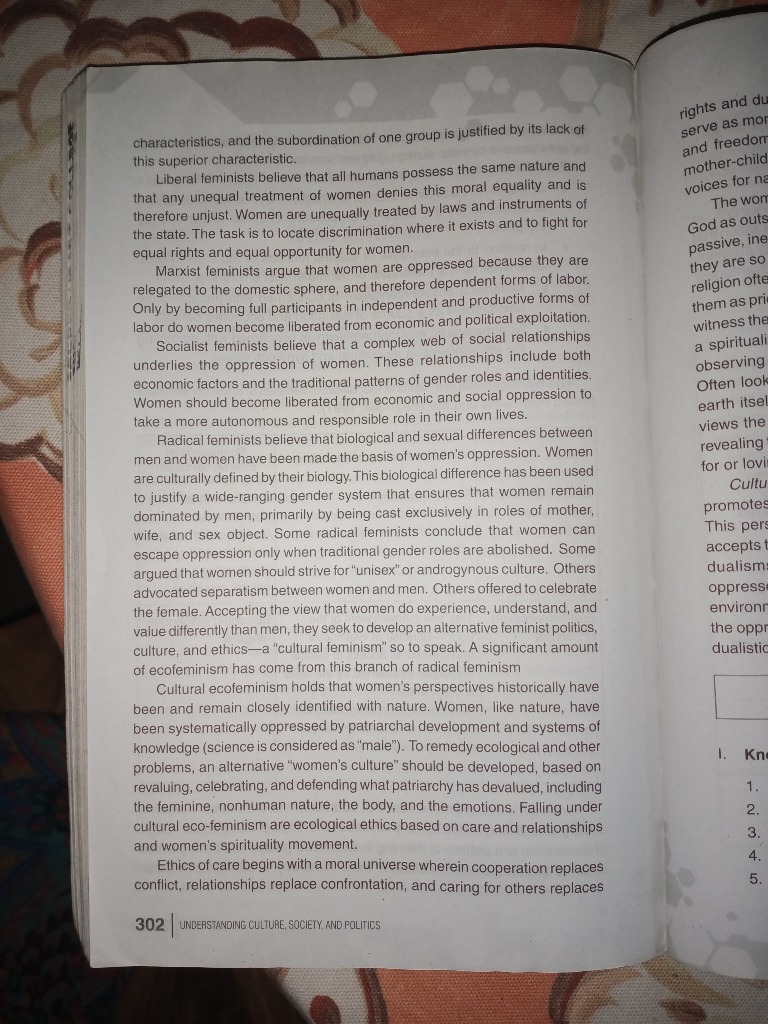Social Movements: Definitions, Types, and Connections
Social Movements

Definition and Characteristics
-
Social Movements: Collective actions by a significant portion of a major social category to promote specific interests.
- Not always aimed at revolutionary change.
- Examples: Environmental movements, civil rights movements.
-
Characteristics:
- Formed by groups who feel a disparity between civil society and governmental decisions.
- New social interests are introduced, often reacting to existing social order.
Types of Social Movements
-
Environmentalism
- Includes two main categories: anthropocentric and ecocentric.
-
Anthropocentric Environmentalism
- Humans are central to managing the environment.
- Intrinsic value is placed on humans, separate from the environment.
-
Ecocentric Environmentalism
- Nature has inherent rights.
- Emphasizes equality of all living things.
- Opposes social and economic organizations linked to capitalist systems.
Development and Goals
- Movements emerge when there are perceived failures by governments.
- Aim to introduce new political space and interests.
- Don't always aim to govern but to influence policies and social orders.
Related Concepts
- Civil Society: Space outside the government where citizens act collectively on interests.
- Capitalism and Social Organizations: Movements often challenge structures seen as contributing to social issues.
These notes offer insights into social movements, outlining their definitions, types, goals, and the socio-political contexts they engage with.
Extended readings:
Feminism and Environmentalism

Feminism
- Definition: Feminism is a social movement focused on addressing the status of women in society.
- Key Characteristics:
- Challenges patriarchal structures and seeks gender equality.
- Analyzes power dynamics and social stratification.
- Key Characteristics:
Environmentalism
Environmentalism is categorized into various types based on objectives and approaches towards human-environment relationships. The primary focus is to rationalize the use of environmental resources sustainably.
Types of Environmentalism
| Type of Environmentalism | Characteristics |
|---|---|
| Environmentalism of Survival | - Protects livelihoods and communal resources. <br>- Reacts to environmental threats from the state. <br>- Addresses issues like poverty and unequal growth. |
| Environmentalism of Affluence | - Focused on industrialization effects and religious influences. <br>- Tackles increased adverse impacts of economic activities. |
| Materialist Environmentalism | - Views environment as vital for livelihood. <br>- Concerned with economic benefits from the environment. |
| Non-materialist Environmentalism | - Emphasizes cultural and symbolic values of the environment. <br>- Interested in preserving the environment beyond economic gains. |
Additional Insights
- Anthropocentric vs. Ecocentric:
- Anthropocentric approaches focus on human-centered benefits from environmental conservation.
- Ecocentric approaches prioritize the intrinsic value of nature and ecosystems.
Concepts in Feminism and Environmentalism
- Value Hierarchy: In both movements, various strategies and thoughts are valued differently based on their effectiveness in addressing inequalities and resource distribution.
- Intersectionality: Both feminism and environmentalism intersect with other social justice issues, affecting policy changes and advocating for comprehensive reforms.
These movements often challenge existing systems and aim to introduce new social interests that improved resource management and gender equality.
Extended readings:
Feminist Theories and Perspectives

Liberal Feminism
- Belief in Equality: All humans possess the same nature, and unequal treatment is unjust.
- Focus: Locating discrimination and fighting for equal rights.
- Approach: Addressing legal and state instruments to ensure equal opportunities.
Marxist Feminism
- Economic Oppression: Women's oppression linked to economic dependency.
- Solution: Participation in independent labor liberates women.
- Analysis: Examines capitalism's role in women's status reduction.
Socialist Feminism
- Social Relationships: Oppression comes from societal and economic structures.
- Focus: Gender roles and identity formation contribute to oppression.
- Goal: Economic and social liberation for autonomy in personal lives.
Radical Feminism
- Biological Determinism: Oppression based on biological differences.
-
Perspective: Women should embrace 'female' values versus patriarchal values.
-
Cultural Feminism: Creating an alternative feminist culture and ethics.
-
Subgroups:
- Unisex/Androgynous Culture: Desire to abolish traditional gender roles.
- Separatism: Some advocate for separating women from men.
-
Cultural Ecofeminism
- Nature and Women: Women's perspectives align with nature.
- Oppression Link: Patriarchal development oppresses both women and nature.
- Solution: Develop a "women's culture" that values nonhuman nature and spirituality.
Ethics of Care
- Moral Universe: Cooperation over conflict, relationships over confrontation.
- Focus: Caring for others versus hierarchical structures.
Key Insights
- Complexity of Oppression: Intersection of social, economic, and biological factors.
- Diverse Strategies: From legal reform to cultural transformation.
- Relationship with Nature: Linking ecological movements with feminism.
Understanding these various feminist perspectives helps in recognizing the multifaceted nature of gender inequality and the different approaches to achieving societal change.
Extended readings:
Cultural Ecofeminism and Governance

Cultural Ecofeminism
-
Moral Universe:
- Focuses on the values of mothering and friendship.
- Prioritizes human-nature relationships similar to mother-child relationships.
-
Women's Spirituality Movement:
- Critiques Western religion for disconnecting from nature.
- Suggests that traditional religion views nature as passive and inert.
- Encourages viewing God as intertwined with nature, re-identifying nature, the divine, and humanity.
-
Criticism of Cultural Ecofeminism:
- Sometimes seen as essentialist by emphasizing a unique female connection to nature.
- Risk of being co-opted by dominant male culture dualisms.
- Advocates for challenging hierarchical structures and promoting alternative frameworks.
Governance and Decentralization
State vs. Civil Society
-
State:
- Governing body with authority to create laws and enforce them.
- Often centralized and structured.
-
Civil Society:
- Comprised of social groups and organizations that operate independently of the government.
- Engages in advocacy and social movements to influence policy.
Development Models
-
Centralized:
- Decision-making remains within a central authority.
- Pros: Consistency in policies and initiatives.
- Cons: Lack of local participation and adaptability.
-
Decentralized:
- Transfer of decision-making powers to local authorities.
- Pros: Enhanced local engagement and responsiveness.
- Cons: Possible inconsistency across regions.
-
Hybrid Models:
- Combination of centralized and decentralized characteristics.
- Objective: Balance authority with local autonomy.
Types of Decentralization
-
Political Decentralization:
- Shifts political decision-making to local governments.
- Improves accountability and representation.
-
Administrative Decentralization:
- Distributes authority to local departments for better service delivery.
-
Fiscal Decentralization:
- Empowers local governments with financial autonomy for improved resource allocation.
Adaptive Co-management
- Features:
- Collaborative management involving multiple stakeholders.
- Flexibility to adapt management practices based on new information.
- Encourages participation and shared responsibility.
Governance vs. Government vs. Administration
-
Governance:
- Inclusive process involving state, civil society, and private sector.
- Focuses on creating frameworks for interaction and accountability.
-
Government:
- Institutional body empowered to make and enforce laws.
-
Administration:
- Structures and processes employed by the government to implement policies.
Extended readings: